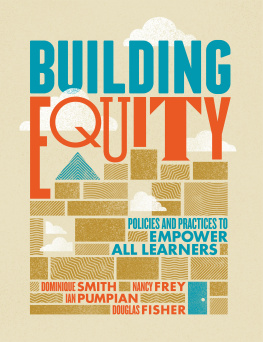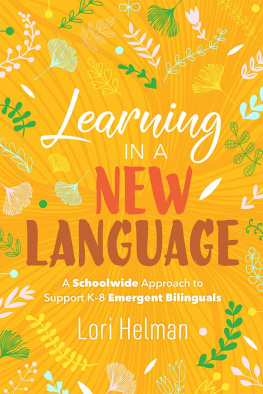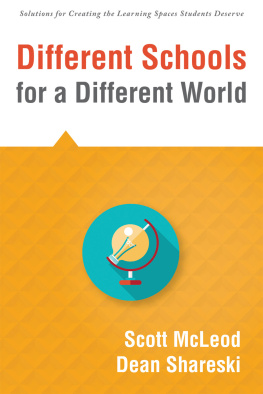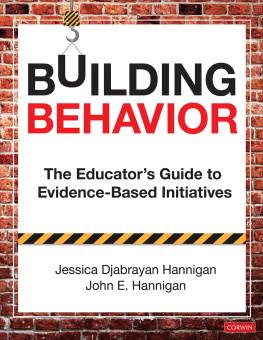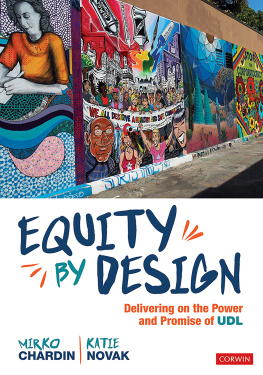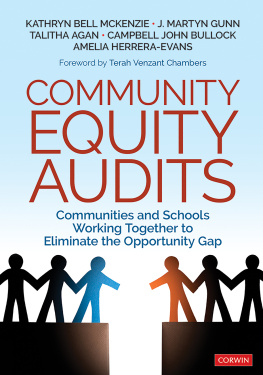Introduction
....................
A Chinese-American man dressed in workout clothes and flip-flops was on his way to the gym when he stopped by his local elementary school to enroll his son in kindergarten. The staff member at the front desk asked for ID and proof of residence. The man produced his ID and a utility bill, which his neighbors had assured him would be sufficient. The front desk worker apologized. The school needed to see a mortgage statement or rental agreement in addition to a utility bill, she explained. Two days later, this same man stopped by this same elementary school on his way home from work, dressed in a suit and tie. He had the required mortgage statement, but this time, the person working at the front desk asked only for a utility bill. His son was enrolled within minutes.
Some might look at this parent's experience and think, "No harm done." There was a minor obstacle, but eventually the man enrolled his son. Others see inequityan example of the kind of bias that is all too common in schools. We don't know if the first staff member always requires two forms of documentation and the second only one, or if this parent's race and clothing influenced the treatment he received. What we do know is that he came away from the experience wondering why he was targeted and whether or not his son would be treated fairly in this new school.
A fair shotthat's what parents and students expect from their schools. Of course, some would not mind a little special treatment, but they believe that, at the core, schools have to be fair.
What it means for schools to be fair has changed over the decades. At one point in history, it was deemed fair to exclude girls from science classes. It was once considered fair to segregate students based on their race or ethnicity. Today, we think of fair as being not just equal but equitable. That's an important distinction. Whereas equal means everyone gets the same treatment and services as everyone else, equitable means each person gets what he or she needs to succeed. For example, in an equal situation, everyone running the race has shoes; in an equitable one, everyone has shoes that fit and are meant for running, as opposed to some having track shoes and others having shoes that are too small, boots, or high heels. In an equal school situation, we build staircases that learners can ascend to higher levels of achievement; in an equitable one, we make sure to build ramps alongside those staircases.
Equity in education is an important concern because schools are essential in the maintenance of democracy. Our founding fathers had two plans in place to ensure that the democracy continued. First was the three branches of government, and second was the need and commitment to educate citizens so that they would be sufficiently informed to participate in decision making. Our system of government is based on the idea that all people are created equal and have the same rights under the law. These are principles we teach our students, and they are principles we honor by working to ensure every student develops the skills and knowledge necessary to pursue his or her dreams.
School Equity
Imagine a school in which
- The student body truly represents the diversity of human experience and each member is being prepared to interact, survive, and thrive as 21st century learners and world citizens.
- The culture, educational program, and support services are informed by and sensitive to the student body's social and emotional needs such that each student is fully present and engaged in learning.
- The kind of opportunity roadblocks that cause the "haves" to receive more of what education has to offer and the "have-nots" to receive less have been identified and eliminated, and all doors are open to opportunities to engage each student in challenging learning experiences.
- Instructional excellence is the norm, and each member of the instructional team is not just committed to professional mastery but also supported in a way that allows for its development and demonstration.
- The student body is motivated and supported to discover their passions and advance toward positive personal, familial, social, civil, and vocational goals and opportunities.
Now imagine transforming your school into one that is fully aligned with these principles and pursuing this overall vision. To that end, we have developed an organizational structure called the Building Equity Taxonomy (BET) and a set of aligned data-collecting toolsthe Building Equity Review (BER) and Building Equity Audit (BEA). Our work to date in over 200 schools in Southern California and hundreds more throughout the United States encourages us to believe that this structure and these tools, applied in tandem, will help you clarify the equity concerns you have about your school and respond by initiating responsive equity-building practices. We offer this book to support your work to map a vision of equity for your school and promote concrete action to achieve it.
The Building Equity Taxonomy
The Building Equity Taxonomy (see Figure I.1) focuses on the equitable practices and outcomes that support critical standards of equity in a school or district.
Figure I.1. The Building Equity Taxonomy
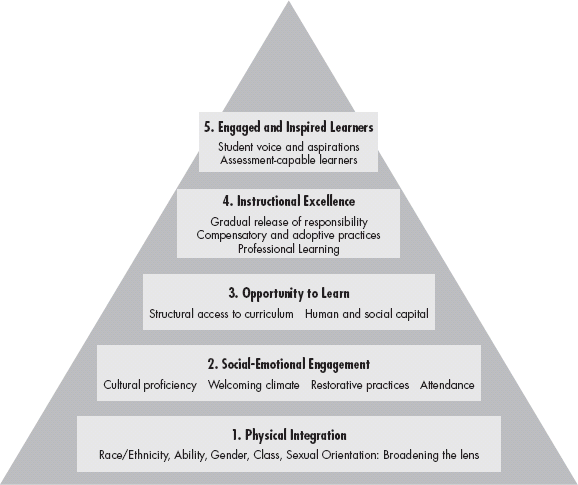
As illustrated in the figure, the taxonomy has five levels, each of which will be explored further in the chapters to come:
- Physical Integration. Equitable schools are diverse ones, and they value their students' differences and unique experiences with the world. In , we focus on integration efforts and broaden the lens from a focus on race and ethnicity to include class, gender, language, ability, religion, and sexual orientation.
- , we explore social aspects of the learning environment, including the creation of a welcoming climate as well as the value of restorative practices and efforts to improve student attendance.
- Opportunity to Learn. Equitable schools analyze and challenge the structural aspects of the curriculum and identify areas that hinder students' opportunities to engage in deep learning. In , we focus on human and social capital within schools as well as compensatory and adaptive approaches to learning. We explore the ways in which school systems can provide students with opportunities based on their needs, which may differ from the needs of peers in the same class or school.
- Instructional Excellence. Equitable schools provide all students with an excellent education that allows them to collaborate with other learners. In , we review the types of learning environments that students deserveones that include clearly articulated learning targets, well-defined measures of success, and tasks that are rigorous and aligned. We focus on the implementation of the gradual release of responsibility as a framework to ensure that students develop confidence and competence.
- Engaged and Inspired Learners. Equitable schools see all students as capable and accomplished learners who are constantly building and reinforcing their identity and agency. Students are empowered to use their education to pursue new interests, skills, and aspirations, and the school provides support in the form of viable action plans and opportunities. In , we look at how students can learn to direct their own learning and identify what else they must learn to reach their dreams.

